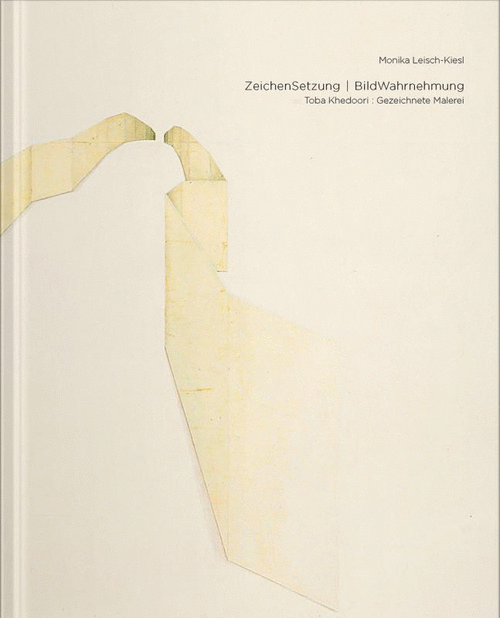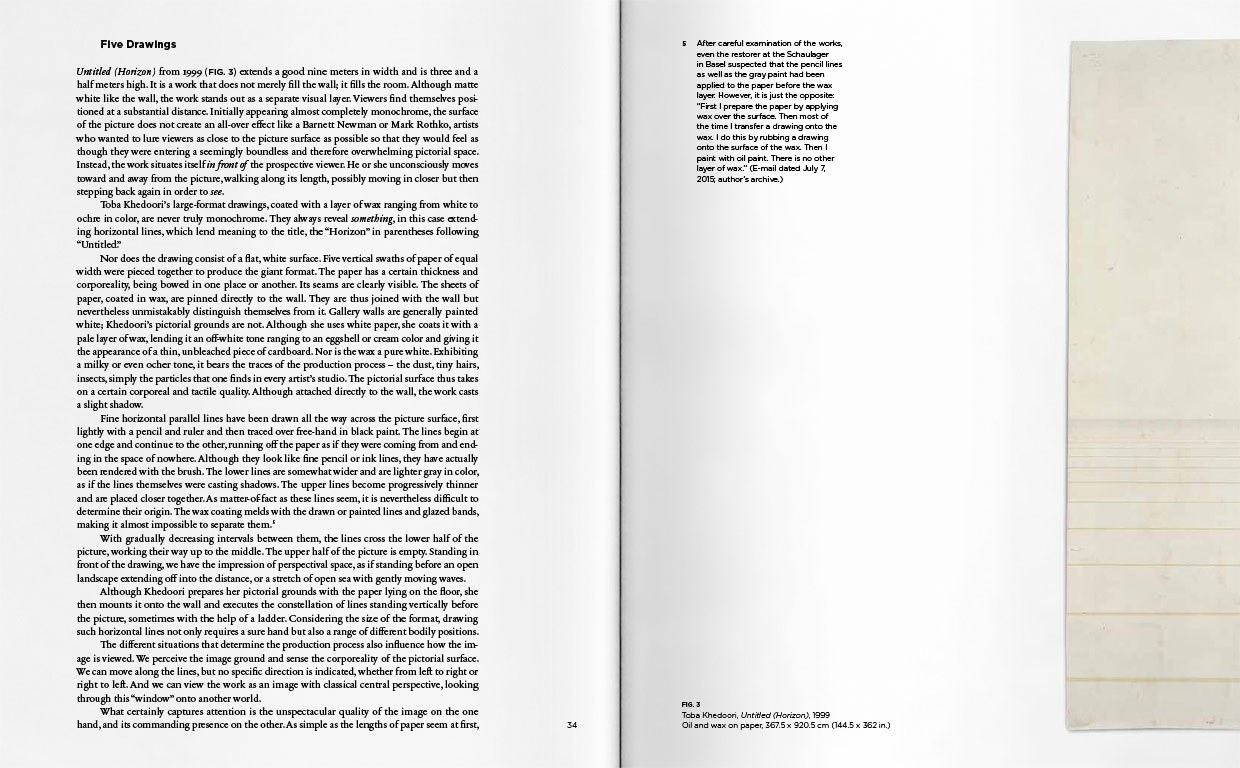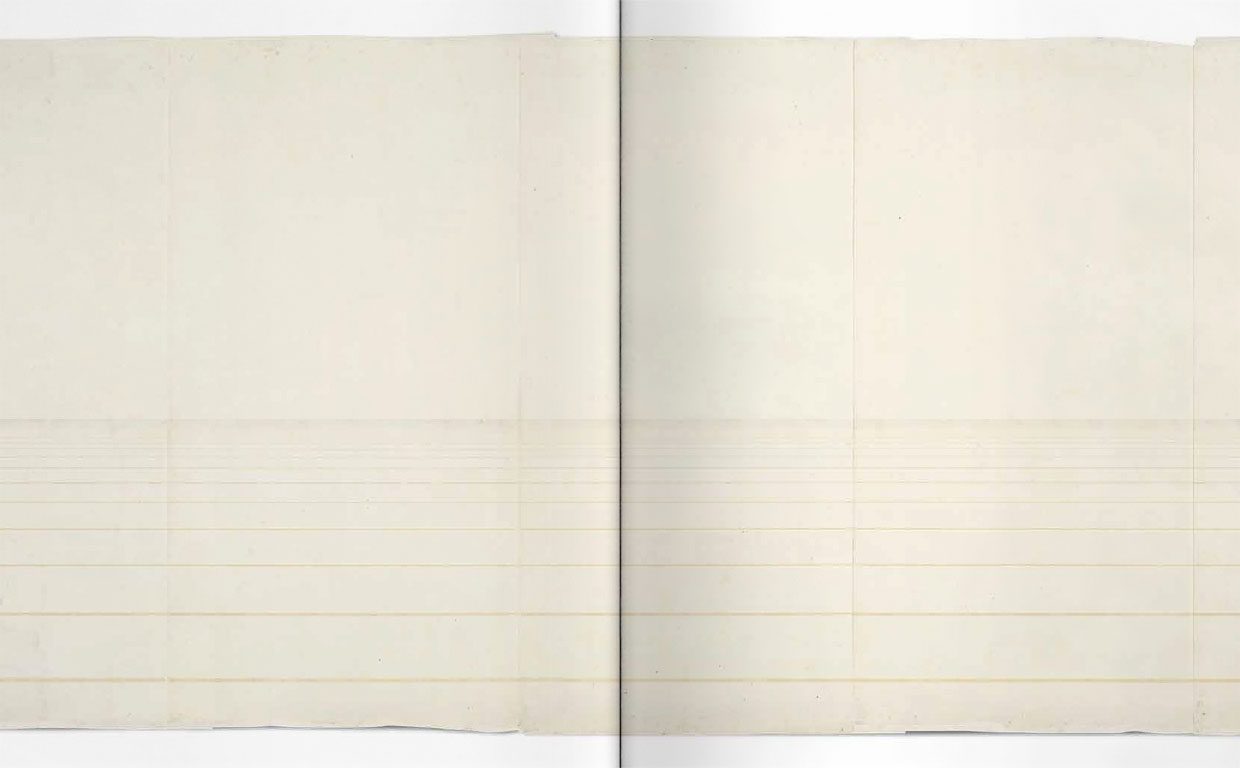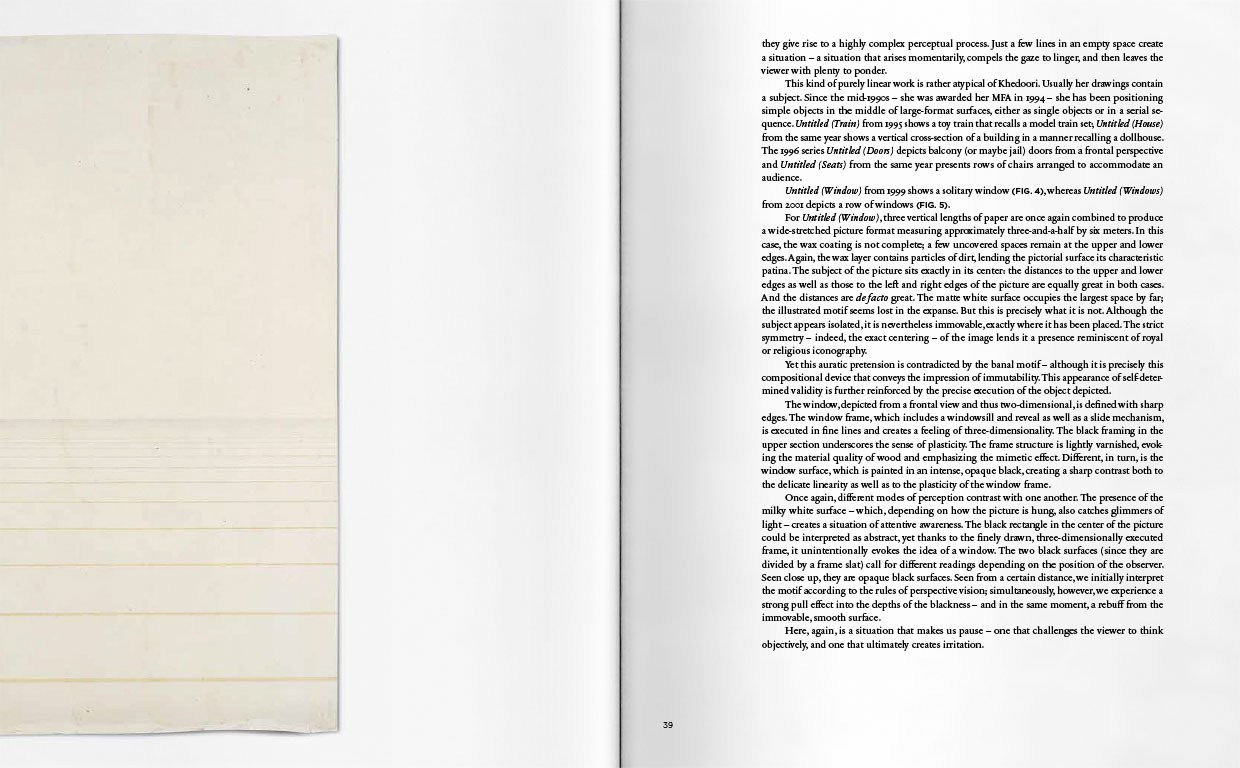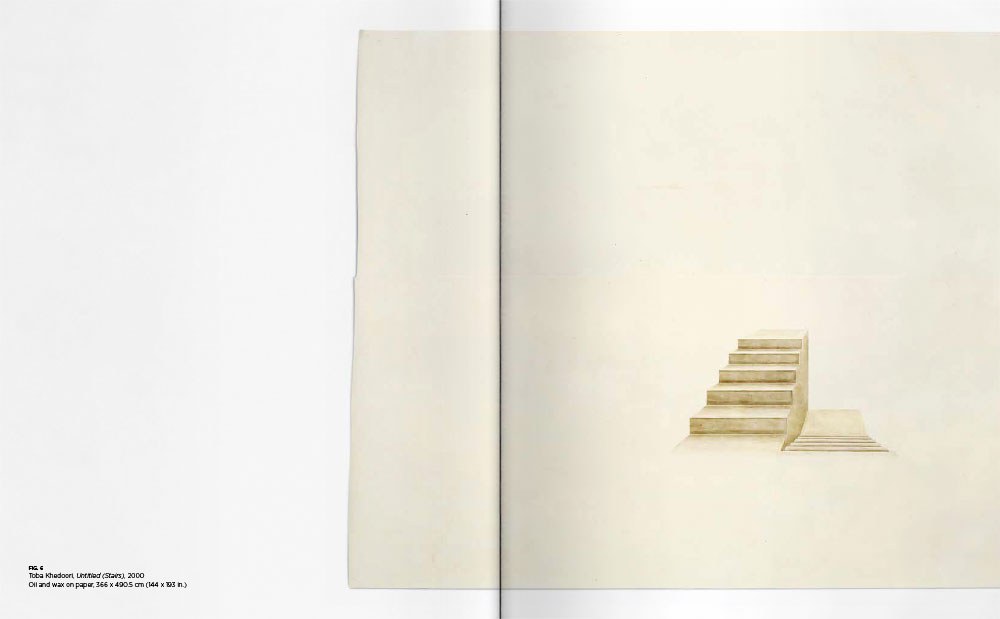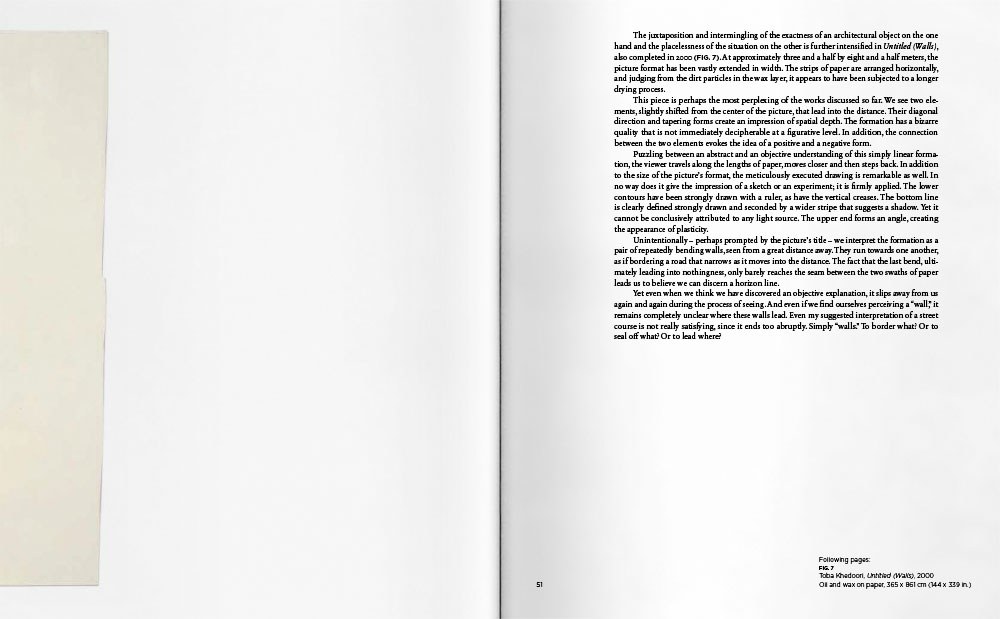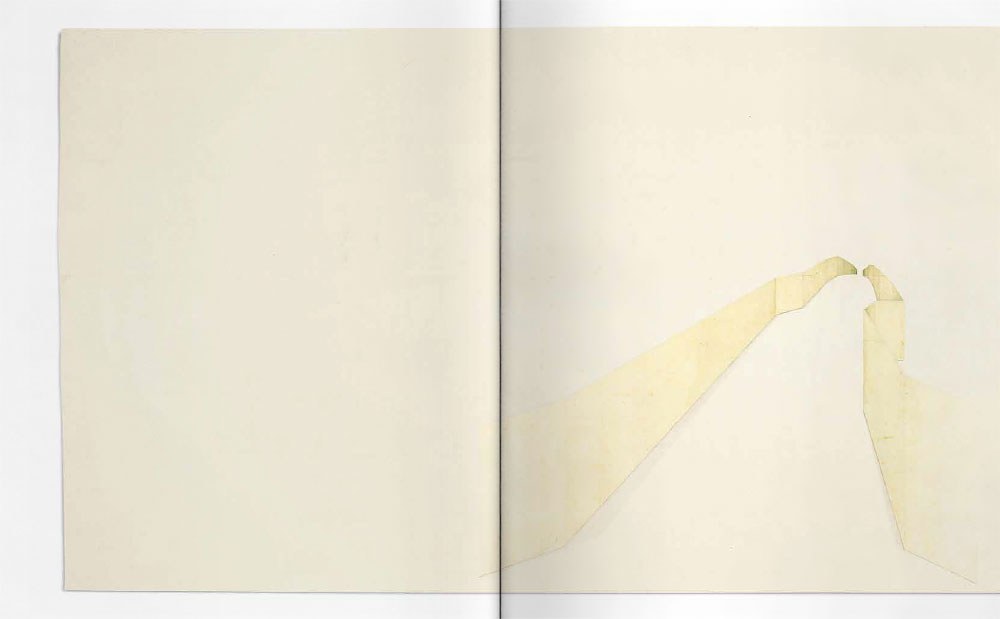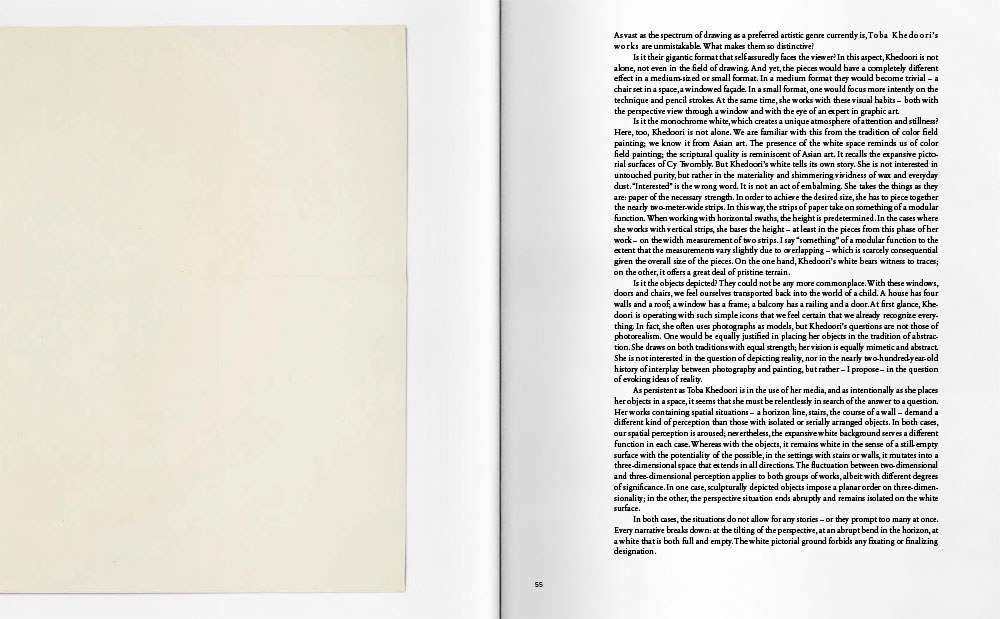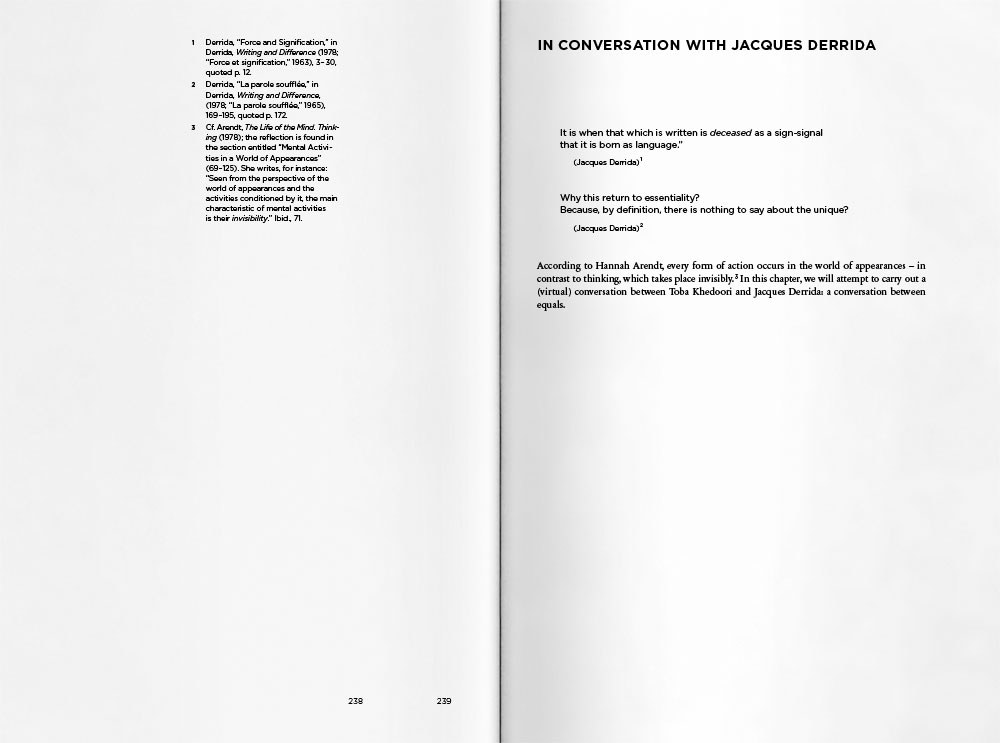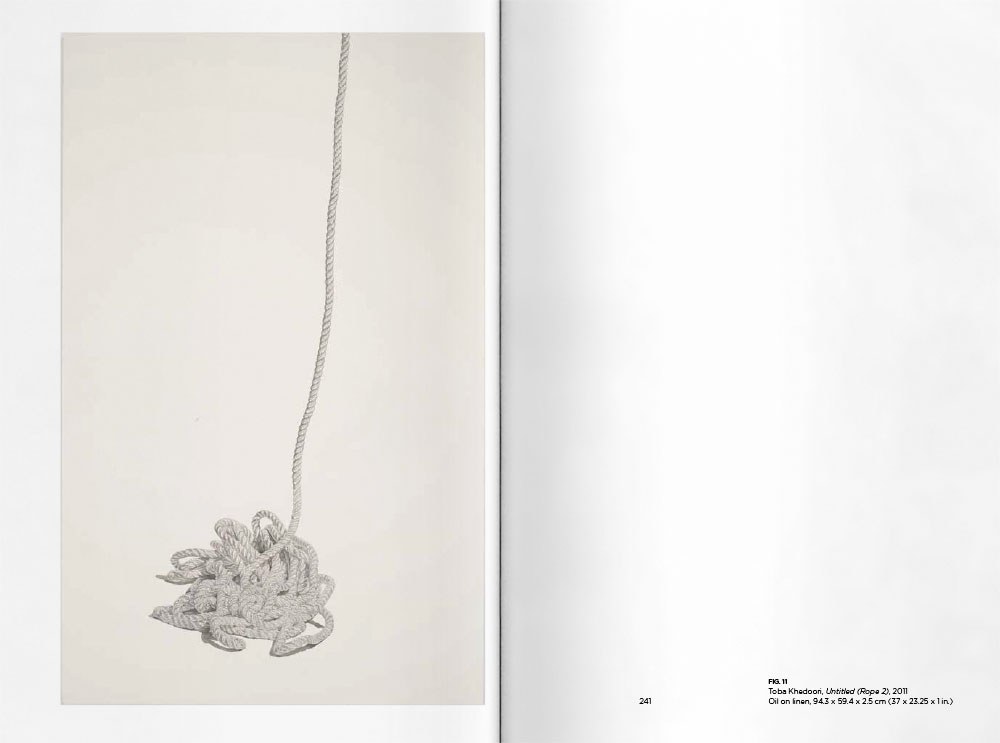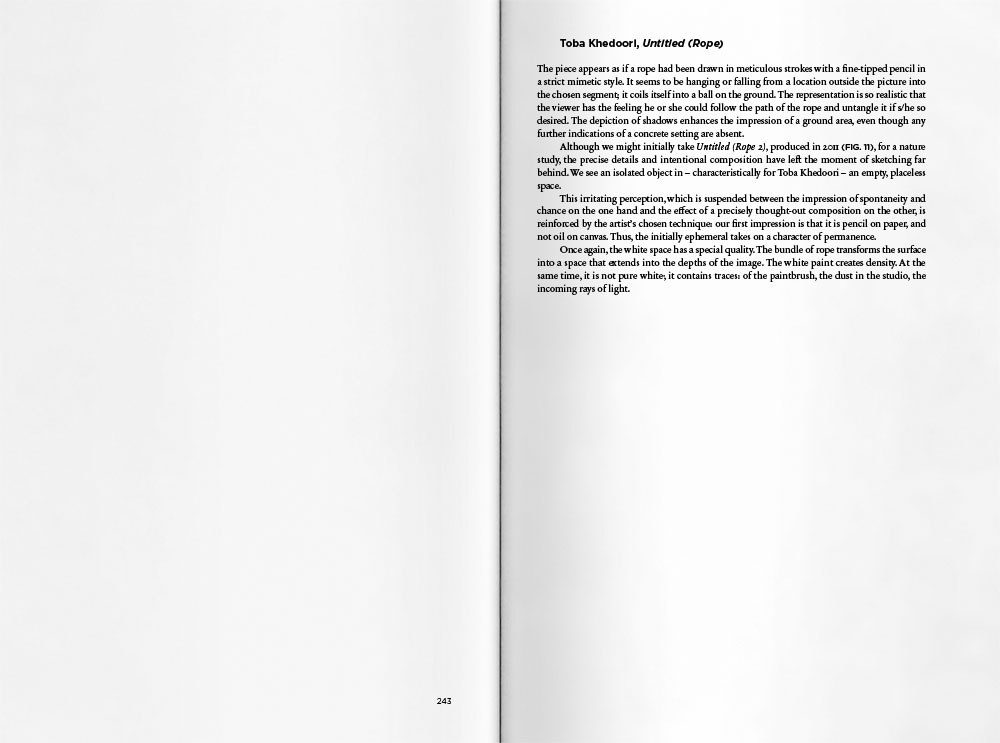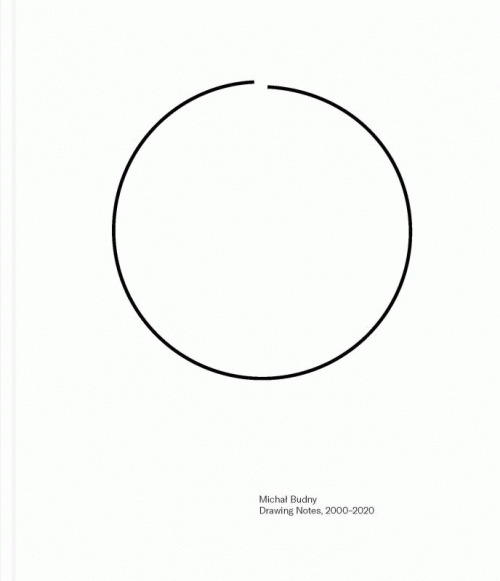
ZeichenSetzung I BildWahrnehmung. Toba Khedoori: Gezeichnete Malerei (German Edition)
Evoking a Sign | Perceiving an Image Toba Khedoori : Drawn Painting (English Edition)
How do images achieve meaning and relevance? Using the large-format drawings by artist Toba Khedoori as a basis, Monika Leisch-Kiesl’s study explores the tension between semiotic and phenomenological theorems. The author investigates the specific qualities of drawing in an examination of the 1990s and 2000s and asks: “How does an image become a sign?”
This permits, or even evokes, a contextualization with manifold social and cultural correlations. Her second question—“How does a sign become an image?”—implies a specific form of attention. Jacques Derrida’s concept of ‘brisure’—’hinge,’ as he introduced it in “De la grammatologie”—leads to a conversation between the images of Khedoori and the texts of Derrida and opens up an area of reflection “in the blank space of the inter-text” / “dans le blanc de l’entre-texte.”
Order the English E-Book here: Monika Leisch Kiesl
YOU MIGHT ALSO LIKE
HOME

